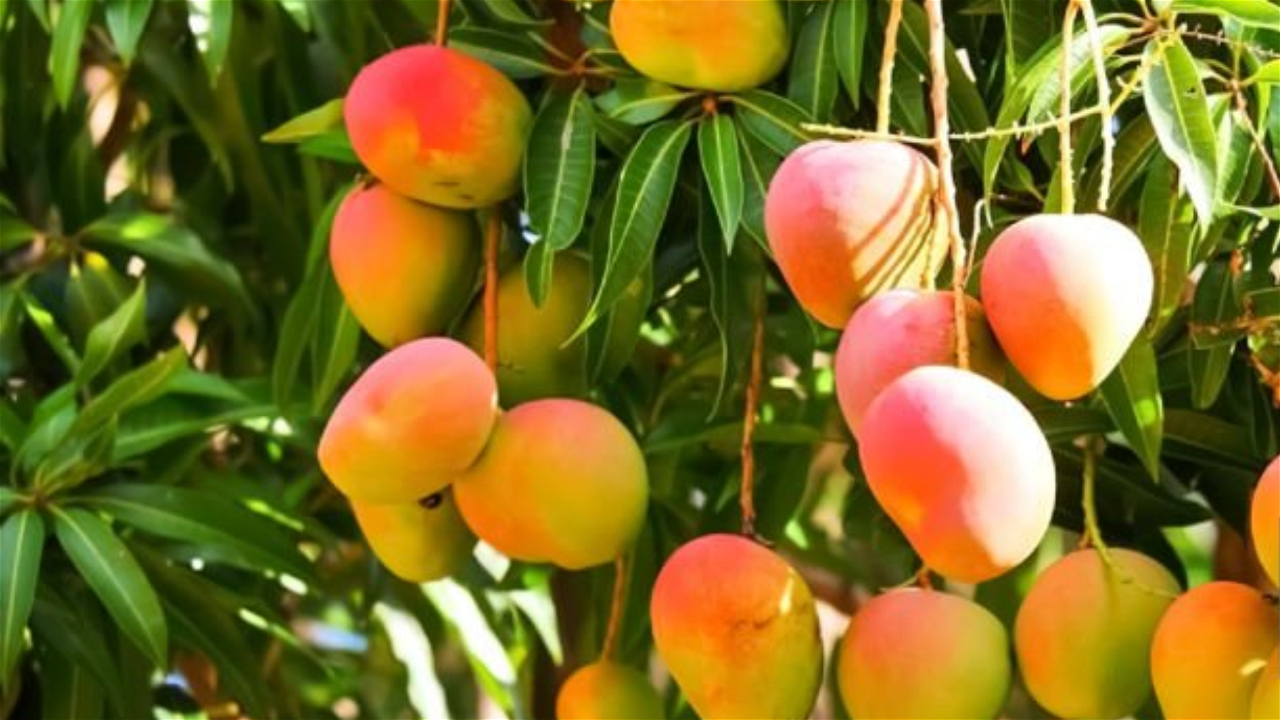
Mango, often referred to as the "king of fruits," aquires a rich diversity of varieties, each with its own unique set of advantages and disadvantages. The development of new mango varieties through hybridization has been a key focus for breeders aiming to enhance desirable traits. Initially, the goal was to create dwarf and regular-bearing cultivars. By the end of the century, the focus shifted towards developing export-ready varieties with vibrant colors. Additionally, efforts have been made to develop cultivars tolerant to spongy tissue, particularly for the commercial production of the Alfonso mango.
The Evolution of Mango Hybrids
The first mango hybrid, Prabhashankar (Bombay × Kalapady), released by Bihar Agriculture College, Sabour in 1951, marked the beginning of large-scale hybrid multiplication. The seventies saw the development of popular hybrids like Mallika and Amrapali at the Indian Agricultural Research Institute (IARI) in New Delhi. IARI has since developed several notable hybrids, including Pusa Peetamber, Pusa Arunima, Pusa Pratibha, Pusa Shrestha, Pusa Lalima and Pusa Manohari. Notably, hybrids such as Ratna are primarily grown in the Alphonso-producing regions of Maharashtra.
Prominent Mango Hybrids
-
Amrapali is renowned for its regular bearing and excellent performance in humid areas, particularly in the coastal regions of West Bengal and Odisha. It has gained popularity in kitchen gardens and high-density orchards across the subtropics. Amrapali's hybrids are known for their wider adaptability and regular cropping, with fruits rich in carotenoids.
-
Mallika is a high-yielding variety popular in Karnataka and southern parts of India. It has established itself as a reliable variety across different regions.
At the ICAR-Indian Institute of Horticultural Research in Bengaluru, several hybrids have been developed, including:
-
Arka Udaya: This semi-vigorous plant type produces medium-sized fruits with bunch bearing. The fruits have the peel color of Anmol and the pulp characteristics of Amrapali. The pulp is firm and deep yellow with a high TSS of 24° Brix and excellent keeping quality (12-15 days).
-
Arka Anmol: A semi-vigorous, regular-bearing variety suitable for high-density planting. This late-season variety is harvested from the second to third week of June. The medium-sized fruits are oblong, weighing about 300-330 grams. They ripen to a uniform golden yellow with smooth, thin skin and firm, orange pulp free from fiber and spongy tissue, boasting a good sugar-acid blend.
-
Arka Neelachal Kesri: Known for early maturity, high yield, and resistance to fruit flies, this variety is highly colored and desirable.
-
Arka Suprabhat: A medium vigorous, regular and bunch bearing hybrid, yielding 35-40 kg per plant after four years. Fruits weigh 250-300 grams and resemble Alphonso in shape. The deep orange pulp is firm, with a TSS of over 22° Brix and a shelf life of 8-10 days at room temperature.
-
Arka Aruna: Produces large fruits averaging about 500 grams. The pale yellow pulp is free from fiber and spongy tissue with a high recovery rate of 80% and a TSS of around 20° Brix. It is a regular-bearing, dwarf-statured variety suitable for backyard planting and 5 x 5 m planting, typically harvested mid-season.
-
Arka Puneet: This mid-season variety is vigorous and regular bearing. Fruits are elliptical, turning yellow with a red blush upon ripening. The firm orange pulp is free from fiber and spongy tissue, with a TSS of around 21° Brix and a pulp recovery rate of 65-70%. The keeping quality is good.
The ICAR-Central Institute for Subtropical Horticulture in Lucknow developed and released:
-
Ambika: It was developed by a cross between Amrapali and Janardan Pasand and was released in the year 2000. This regular and late-bearing variety produces bright yellow fruits with a dark red blush and firm, fibreless pulp. At the age of 10 years, the average yield of the variety is 80 kg per plant and weight is 250-350g per fruit with TSS of 21° Brix. Fruit has a shelf life of 8 days.
-
Arunika: Developed by a cross between Amrapali × Vanraj and was released in the year 2008. The variety features a dwarf canopy and regular bearing with attractive red peel. The smooth, orange-yellow fruit is ideal for both internal and export markets, thanks to its adaptability and high TSS content.
Other Regional Varieties
-
The Regional Fruit Research Station in Vengurle released Ratna (Neelum × Alphonso) in 1981, known for its regular bearing, medium-sized fruits, and spongy tissue-free pulp. Other hybrids from Vengurle include Sindhu (Ratna × Alphonso), Konkan Ruchi (Neelum × Alphonso), Suvarna (Alphonso × Neelum), Konkan Raja (Bangalora × Himayuddin), and Konkan Samrat (Alphonso × Tommy Atkins).
-
The Agricultural Experiment Station in Navsari, Paria, developed hybrids like Neeleshan Gujarat (Neelum × Baneshan), Neeleshwari (Neelum × Dashehari), Neelphonso (Neelum × Alphonso), and Sonpari (Alphonso × Baneshan).
-
Bihar Agricultural University in Sabour released Prabhashankar (Bombay × Kalapady) in 1951, along with Alfazli (Alphonso × Fazli) and Sundar Langra (Langra × Sunder Pasand) in 1980.
-
The Horticultural Research Station in Periyakulam developed PKM-1 (Chinna Suvarnarekha × Neelum) and PKM-2 (Neelum × Mulgoa), which are known for their regular bearing and good-quality cluster fruits. Sai Sugandha (Totapari × Kesar), released in 1998 by Mahatma Phule Krishi Vidyapeeth Rahuri, is another notable hybrid.











